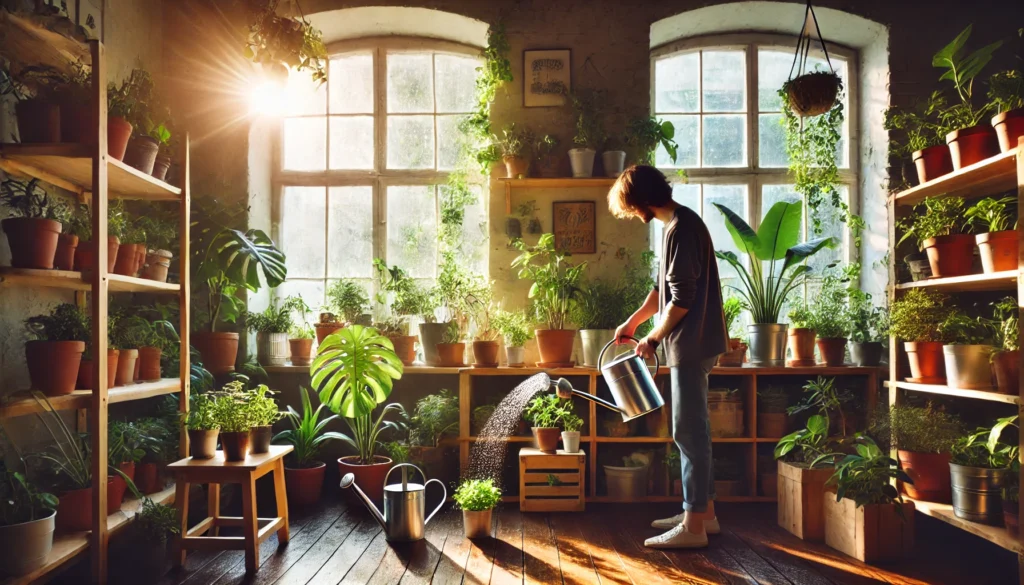
Optimal Watering Frequency for Indoor Gardening: A Complete Guide
Watering is one of the most crucial yet commonly misunderstood aspects of indoor gardening. Many plant owners struggle with getting the watering frequency just right—too much water and your plant’s roots could rot, too little and they’ll wilt. But how do you find that perfect balance? Understanding the watering frequency for indoor gardening is key to ensuring your plants thrive. Whether you’re a seasoned gardener or a beginner, knowing when and how much to water can transform your indoor garden from average to lush. In this guide, we’ll walk you through the essentials of proper watering, so you can confidently nurture your plants to their fullest potential.
Table of Contents
ToggleUnderstanding Watering Frequency 🌱💧
When it comes to indoor gardening, understanding watering frequency is essential for plant health. Simply put, it’s about how often you should water your plants. But here’s the catch: there’s no universal answer! Each plant has its own needs depending on several factors like its type, size, and growth stage.

For instance, succulents like to dry out between waterings, while fiddle-leaf figs prefer consistently moist soil. 🌵🌿 The key is to recognize that plants require different watering schedules based on their unique characteristics.
Overwatering and underwatering are the most common issues, but knowing the ideal watering frequency for each plant can help you avoid both! Keep in mind that this frequency can change as the plant grows, seasons shift, and your indoor environment fluctuates. 🌞❄️
So, how do you figure it out? The first step is knowing your plant’s specific needs and keeping an eye on environmental factors, like humidity and temperature, which can affect how often you should water. 🌸
Factors That Affect Watering Frequency 🌱💦
Several key factors influence how often you should water your indoor plants. Let’s explore these to help you create the perfect watering routine! 🌟
a) Plant Type & Growth Stage 🌿
Different plants have different water needs. Succulents and cacti store water in their leaves, so they need watering less often. On the other hand, tropical plants like ferns and peace lilies thrive in moist soil and need more frequent watering. 🌵🌺
Additionally, plants in their growth stage—whether they’re seedlings, mature, or dormant—will require different watering schedules. A young plant may need more water, while a dormant one will need far less. 🌱
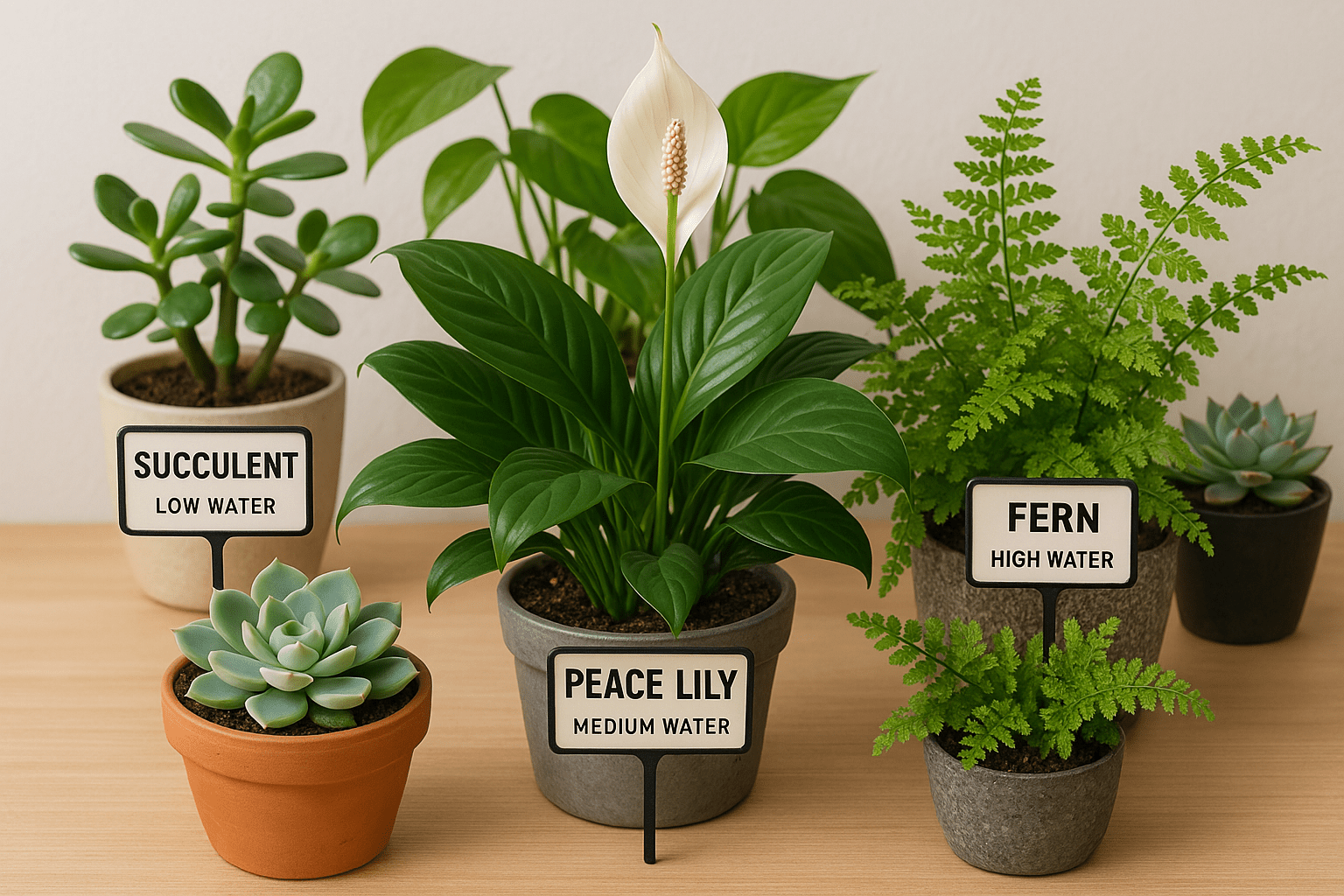
b) Pot Size & Type 🪴
The size and material of the pot can impact how quickly water evaporates. Larger pots retain moisture longer, meaning you may need to water less often. Plastic pots tend to hold moisture more than terracotta or clay pots, which dry out quicker. Always ensure your pot has proper drainage holes to avoid waterlogging! 🏺
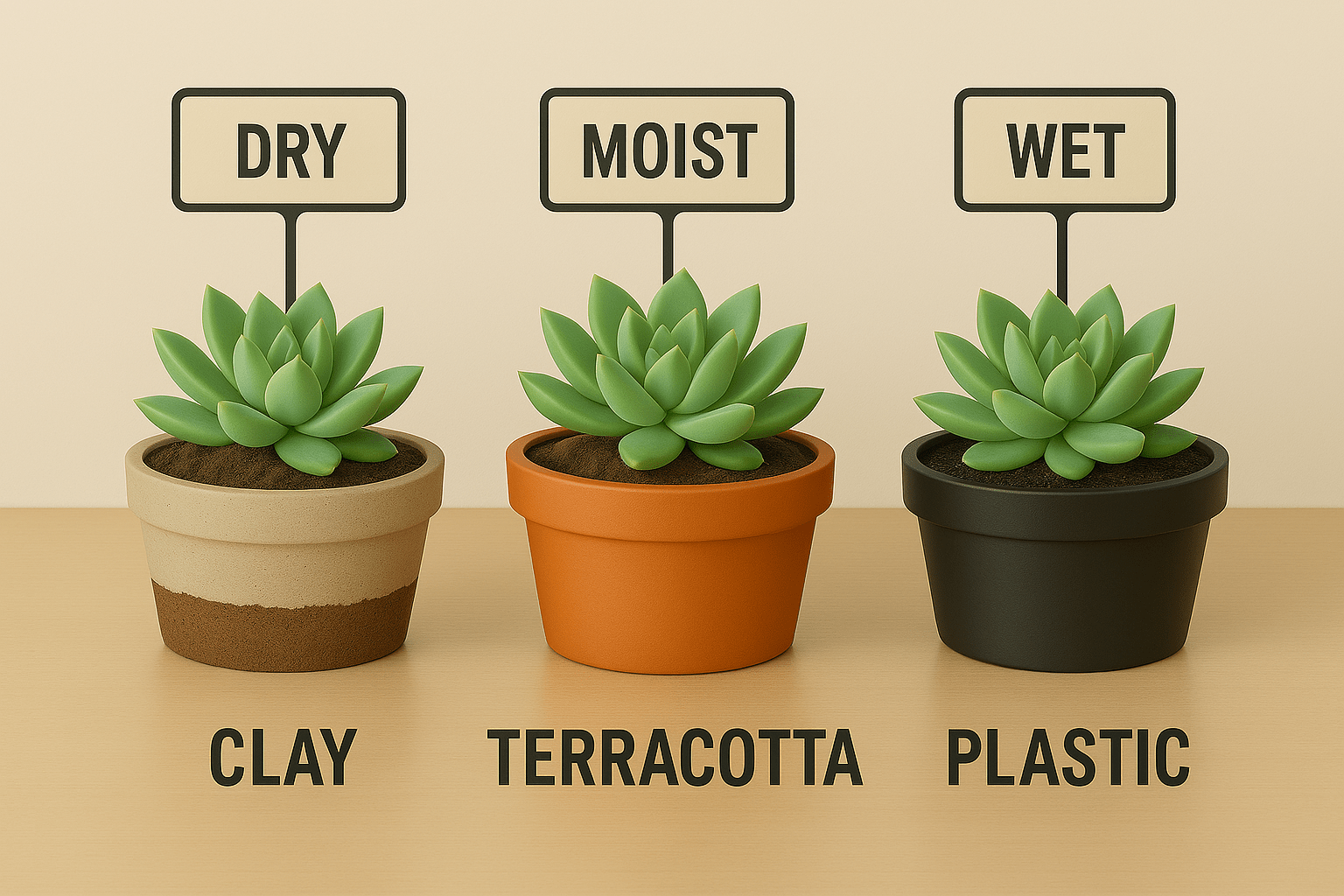
c) Soil Type & Drainage 🌾
Well-draining soil is crucial for healthy plants! 🌻 If your soil retains too much water, your plant’s roots may drown. Plants like succulents prefer sandy, well-draining soil, while tropical plants thrive in moist, but well-draining soil. The type of soil mix you use will dictate how often you should water.
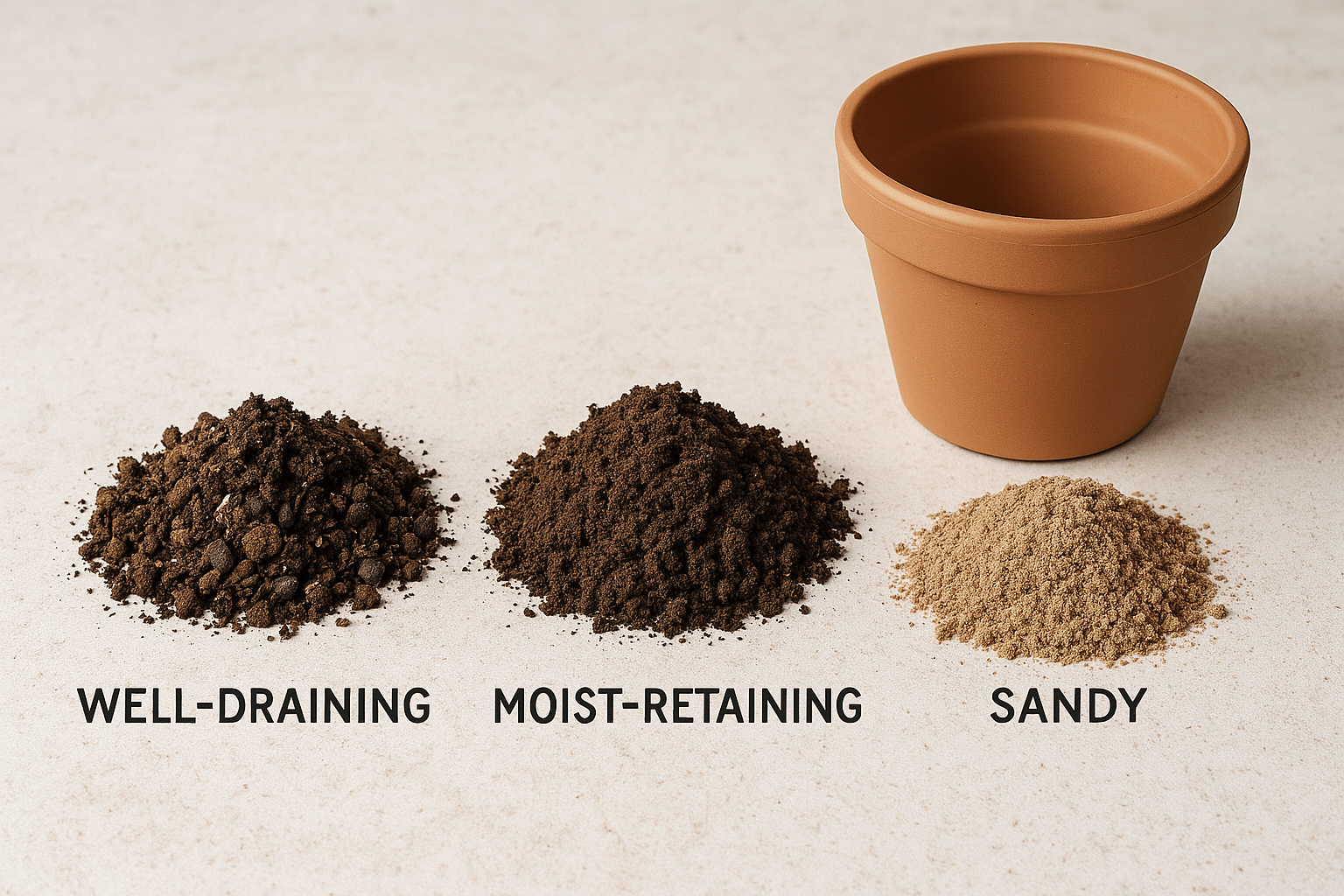
d) Indoor Environment 🌞❄️
Temperature, humidity, and airflow all play a role in watering frequency. During summer when temperatures are high, plants will dry out faster and may need more frequent watering. In winter, cooler temps and lower humidity can slow down moisture evaporation, so you may need to water less. 🌬️💨 Pay attention to your plant’s environment and adjust watering accordingly!
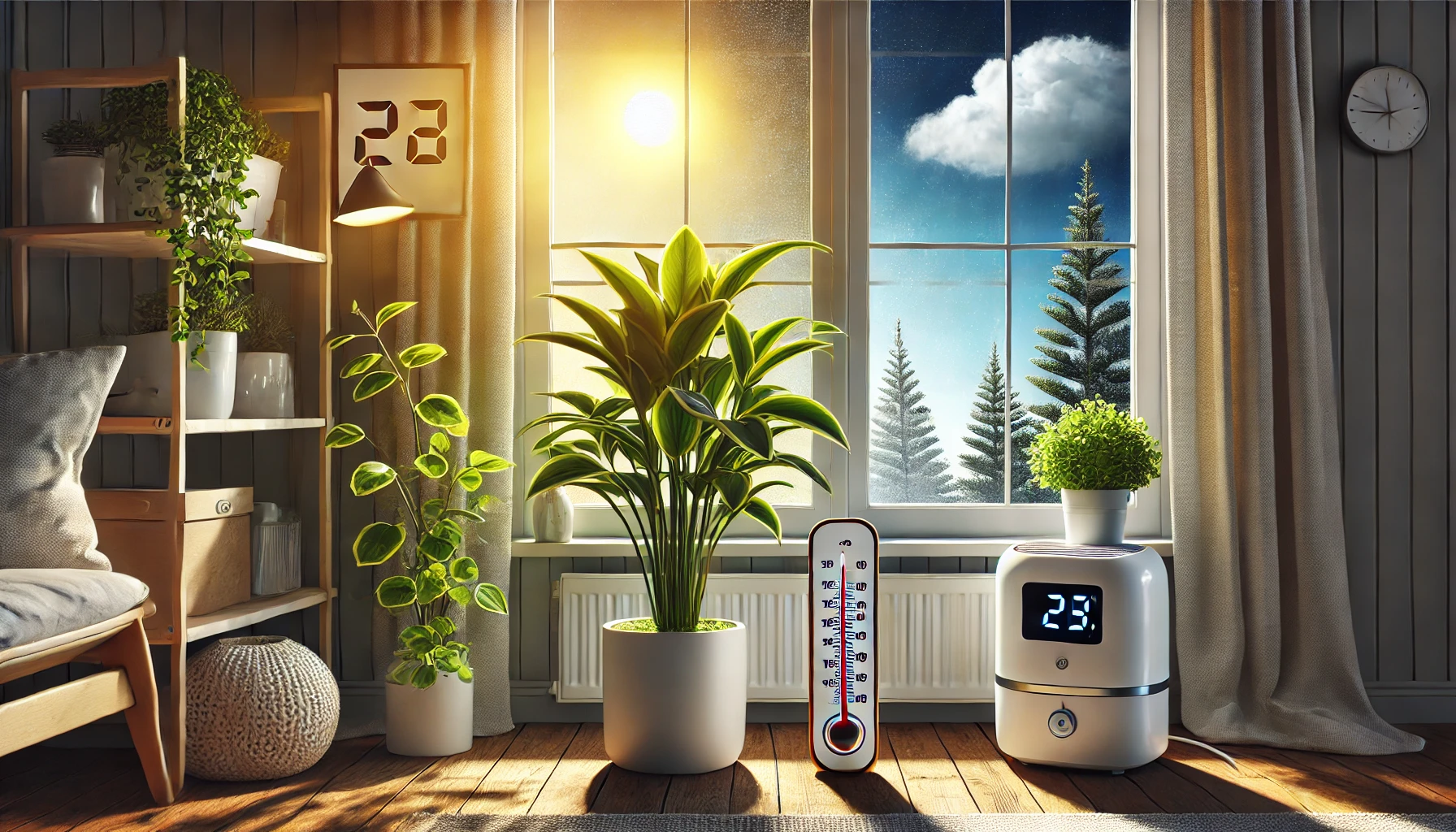
By considering these factors, you can better determine how often to water each plant and avoid common watering mistakes. 💧🌸
How to Determine When to Water Your Indoor Plants 🌱💧
Knowing exactly when to water your indoor plants can be tricky, but there are some simple methods to help you get it right every time! Let’s dive into the best ways to figure out when your plants need a drink. 🌿
a) The Finger Test 👆
One of the easiest ways to check soil moisture is the finger test. Stick your finger about 1-2 inches into the soil. If it feels dry, it’s time to water! If it’s still moist, wait a few more days. This quick and easy test helps you avoid overwatering while making sure your plants get the hydration they need. 🌵
b) Using a Moisture Meter 📊
A moisture meter is a great tool to give you a more accurate reading. Just stick the probe into the soil, and the meter will tell you how much moisture is present. This is especially helpful for plants with deeper root systems or when you’re unsure if the topsoil is drying out but the roots are still moist. 🌺
c) Visual Signs from the Plant 👀
Your plant can also give you clues! Look for these visual signs:
- Underwatering: Leaves may become crispy or yellow, and the plant may look droopy. 🌿
- Overwatering: Leaves might turn yellow or brown, and the soil might feel soggy. You could also notice root rot if you check the roots. 🌧️
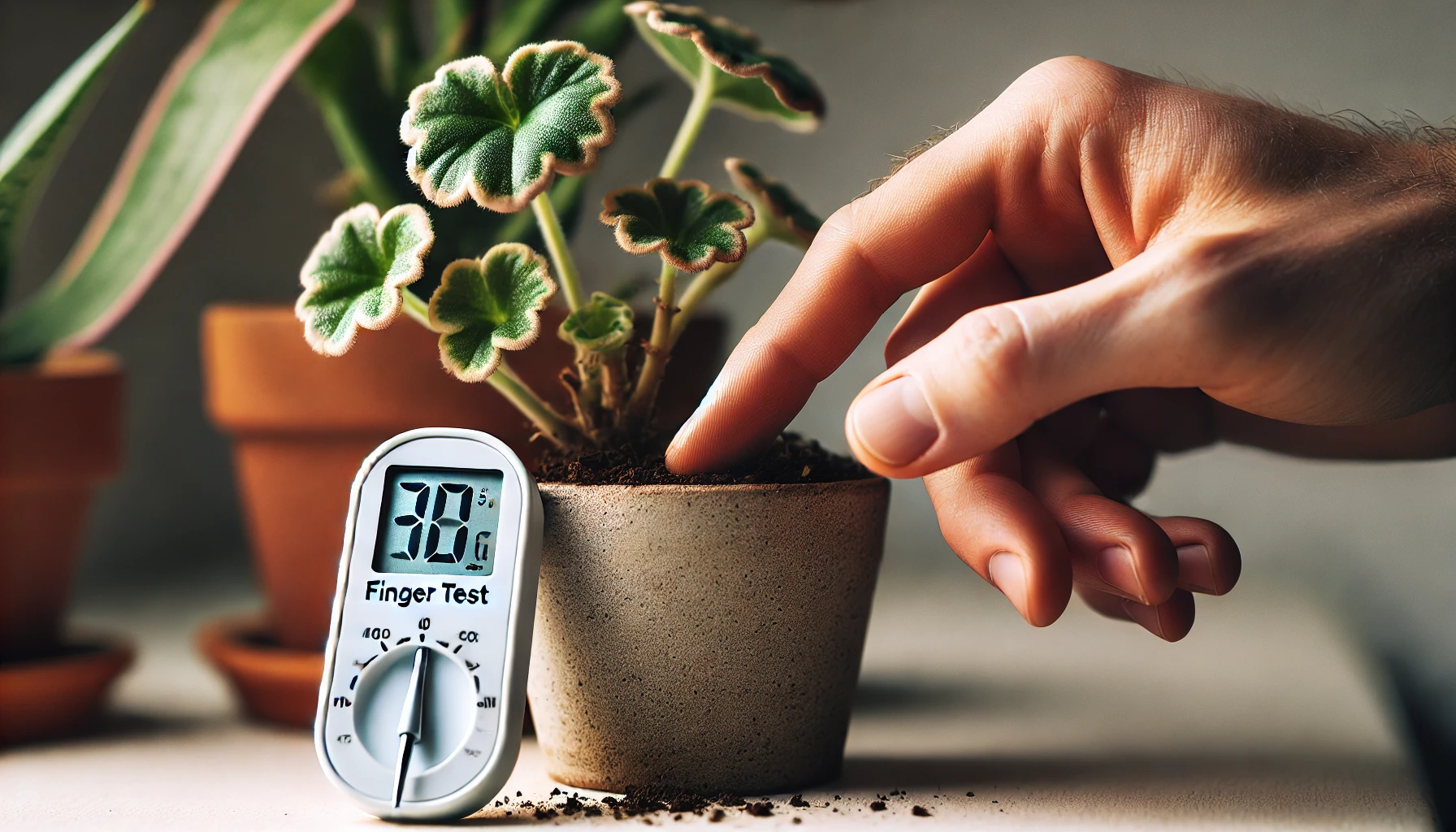
Paying attention to both the soil and plant appearance will help you develop a reliable watering schedule for each plant. Trust these signs, and your plants will thank you! 🌸💦
Best Practices for Watering Indoor Plants 🌱💧
Watering might seem simple, but there are a few best practices to keep your plants healthy and thriving! Follow these tips to ensure you’re giving your indoor plants the hydration they need without overdoing it. 🌿
a) The Right Way to Water 💦
When watering, it’s essential to water deeply rather than just wetting the surface. This encourages roots to grow deeper, making your plant stronger. Water the soil slowly, allowing it to absorb moisture gradually. Avoid watering directly onto the leaves, as this can cause mold or fungal issues. 🌸
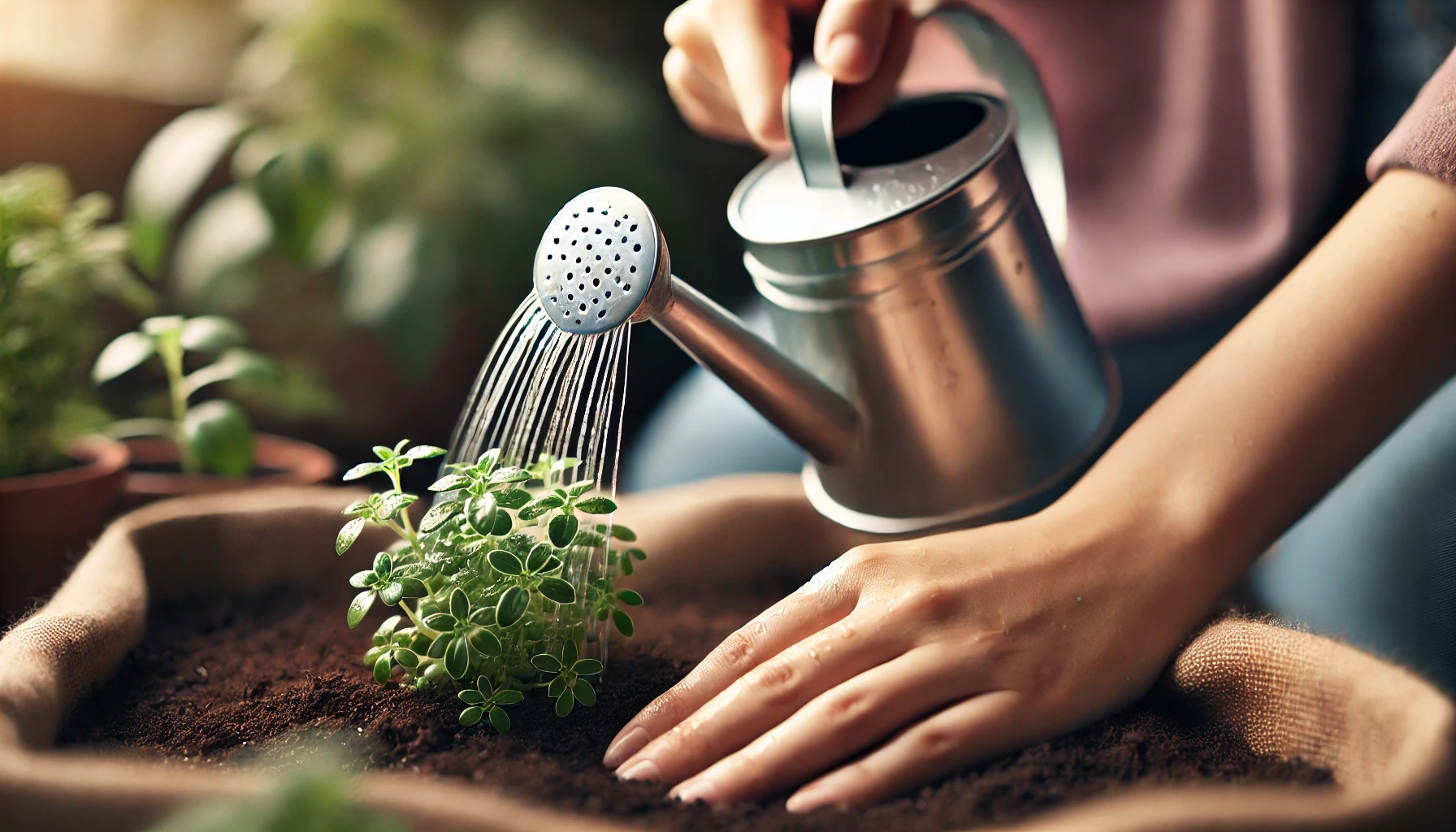
b) Watering Schedule Examples 🗓️
Every plant has its own unique needs, but here are some general guidelines:
- Succulents and Cacti: Water every 2-3 weeks or when the soil is completely dry. 🌵
- Tropical Plants (like Peace Lilies): Water every 7-10 days, or when the top inch of soil is dry. 🌿
- Ferns and Calatheas: Keep the soil consistently moist and water once the top layer feels dry. 🌱 Adjust this based on environmental conditions like light, temperature, and humidity. 🌞❄️
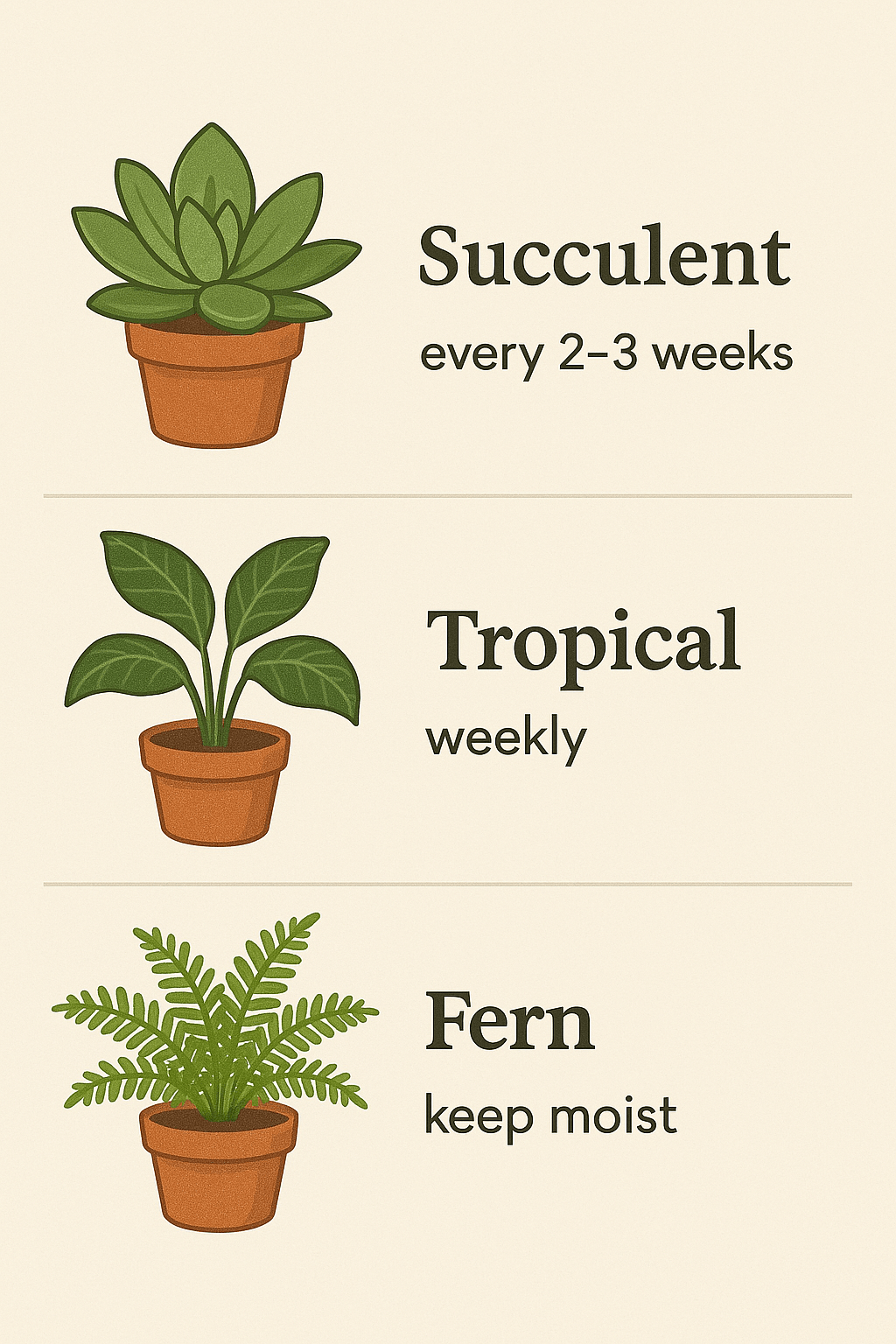
c) Choosing the Right Water 💧
Not all water is created equal! Tap water may contain chlorine or minerals that can harm plants over time. If possible, use filtered water or rainwater. If you must use tap water, let it sit out overnight to allow the chlorine to dissipate. For plants sensitive to minerals, distilled water is your best bet. 🌧️
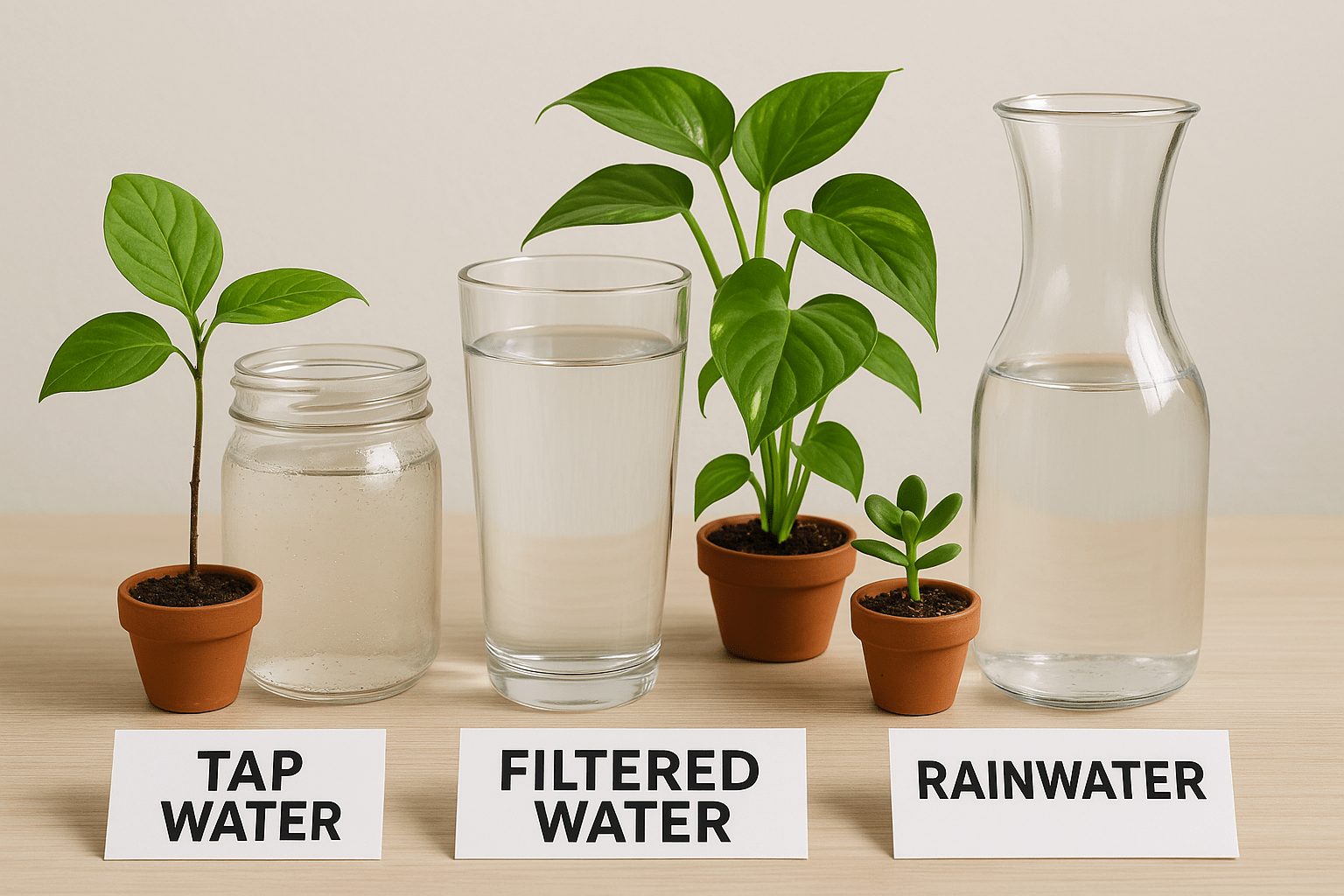
d) Watering Techniques 🌾
- Bottom Watering: For plants in pots with drainage holes, place the pot in a shallow tray of water. The plant will absorb the water through the drainage holes, promoting root health. This is great for plants that dislike getting their leaves wet. 🌸
- Top Watering: Pour water gently onto the soil, avoiding the leaves. Make sure to water until you see excess water draining from the bottom. This ensures the soil gets evenly hydrated. 🌿

By following these best practices, you’ll avoid common mistakes like overwatering and ensure your plants stay happy and hydrated! 🌼
Common Watering Mistakes to Avoid 🚫💦
Even experienced plant owners can fall into the trap of common watering mistakes. Here’s a list of the most frequent errors and how to avoid them to keep your indoor plants healthy and thriving! 🌿
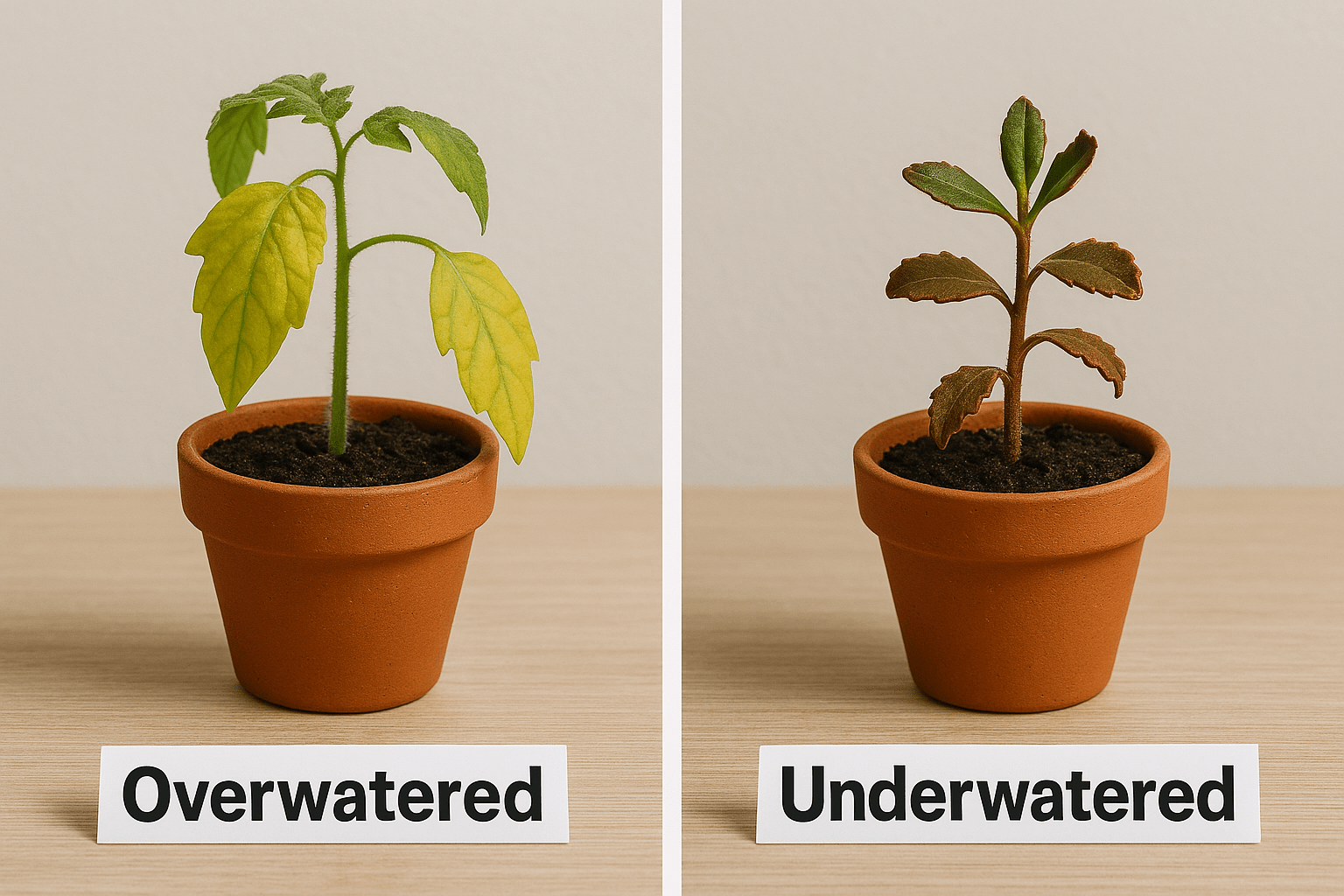
a) Overwatering 💧😞
Overwatering is one of the biggest mistakes, and it’s easy to do! When you water too often, the roots can’t absorb all the moisture, leading to root rot and yellowing leaves. 🌱 To avoid this, always check the soil moisture before watering, and ensure your pots have good drainage. Remember, it’s better to underwater than to overwater. 🌸
b) Underwatering 💦🥀
On the flip side, underwatering can cause your plants to wilt, and their leaves may turn brown or crispy. 🥵 If you notice this happening, make sure you’re watering consistently, especially during dry or hot periods. Use the finger test or a moisture meter to track soil dryness and ensure you’re providing enough hydration. 🌵
c) Watering at the Wrong Time of Day ⏰
The best time to water your plants is in the morning. Watering in the morning gives the soil time to absorb moisture before the heat of the day. 🌞 Avoid watering in the evening, as the moisture may stay in the soil too long, leading to root rot or fungal growth overnight. 🌙
d) Ignoring Drainage 🚱
Without proper drainage, water can accumulate at the bottom of the pot, suffocating the roots. Always ensure your pots have drainage holes, and never let your plants sit in water-filled trays for long periods. If you notice water collecting at the bottom, empty it out. 🪴
e) Watering Too Quickly 💦💨
Watering too fast doesn’t give the soil enough time to absorb the moisture, leaving it unevenly hydrated. Instead, pour water slowly around the base of the plant, allowing the soil to soak it up gradually. 🌼

By avoiding these common mistakes, you’ll improve your watering routine and keep your plants flourishing for months to come! 🌻
Final Thought
Mastering the right watering frequency for indoor gardening is the key to keeping your plants healthy and vibrant. By understanding your plants’ specific needs, adjusting for environmental factors, and following the best watering practices, you’ll be well on your way to a flourishing indoor garden. 🌱
Remember, every plant is different, so always observe your plants closely and adjust your watering routine as necessary. Whether you’re nurturing a delicate fern or a hardy succulent, the right amount of water makes all the difference! 🌸
Start applying these tips today, and enjoy the beauty of thriving, happy plants in your home. Happy gardening! 🌼
Frequently Asked Questions (FAQ)
How often should I water my indoor plants?
Watering frequency depends on the plant type, pot size, season, and indoor climate—typically every 1 to 2 weeks.
What’s the best way to know if my plant needs water?
Check the top inch of soil—if it feels dry, it’s usually time to water. Some plants prefer more dryness before watering.
Do all indoor plants need the same watering schedule?
No, succulents and cacti need less frequent watering, while tropical plants may need more consistent moisture.
Can I overwater by watering on a schedule?
Yes, watering on a strict schedule can lead to overwatering. Always check soil moisture before watering.
How does the season affect watering needs?
Plants need less water in winter and more during active growth periods like spring and summer.
What role does pot type play in watering frequency?
Terra cotta pots dry out faster than plastic or glazed pots, which means more frequent watering may be needed.
Why are my plant’s leaves yellowing?
Yellow leaves can be a sign of overwatering or poor drainage. Check soil moisture and drainage holes.
Should I mist my plants as part of watering?
Misting can help with humidity for tropical plants but doesn’t replace proper root-zone watering.
